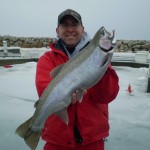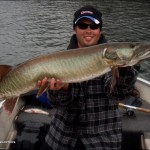By: Andrew Ragas – Date Posted: March 13, 2012
Even though many of today’s fishing lines have become more complex and technologically advanced than ever, monofilament remains a favorite among the majority of anglers who turn to its versatility and reliability. Through innovative design, Cortland Line has developed the Camouflage monofilament to deliver superior performance while still maintaining the ease of use and reliability of traditional mono.
Utilizing nearly 100 years of braiding experience and technology, Cortland Line, of Cortland New York, was an early pioneer in the formulation and extrusion of nylon monofilament fishing line. Their first lines were introduced in 1960 and achieved such strong sales that they have remained in production for over 50 years. Over the years, Cortland has added and discontinued lines as a result of the changes and improvements made to the design and technology of monofilament and copolymer lines. Today, Cortland offers a broad selection of all-purpose and specialty high-performance monofilament lines to meet the needs of every type of angler.
Cortland Camo boasts high abrasion resistance and that rivals the best lines in the world, even while adding a super supple memory free construction. The match-the-water coloration feature of the line allows you to cut back the line to the color that matches water conditions, giving you a virtually invisible underwater connection to your bait or lure.
A question that often perplexes anglers is, why do fish get spooked by fishing line? For instance, a continuous connection leading out of your lure or bait shouts “something’s wrong” to any wary fish. Cortland has solved this problem by dying its Camo in two-foot increments, thus eliminating the connection and putting fish off guard to underwater color contrasts.
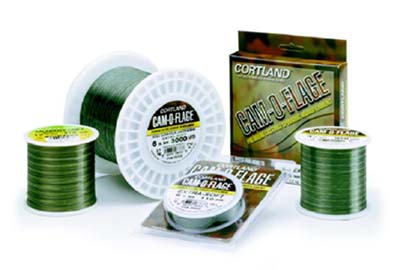
I received over half a dozen spools of 8lb, 10lb, and 12lb Cortland Camo for my bass fishing in 2011. The line used most frequently was the 8lb. as it proved to be an excellent multi-purpose line on medium heavy action spinning equipment for clear water smallmouth bass fishing, and probing the shallow weedlines for largemouth bass. Meanwhile, both the 10lb and 12lb were used exclusively on baitcasting equipment for cranking and pitching plastics.
Impressions
Presently, line manufacturers across the world are heavily investing time and resources on researching and developing new monofilaments that outperform the competition. Several new fishing lines are developed to possess singular specific characteristics such as less visibility, zero memory, more limpness, greater tensile strength and resistance to sunlight and abrasive conditions. Since their debuts, many of these newly advanced lines have experienced successful sales due to brand reputation or else a single specific characteristic. However, many of them are failing anglers because they aren’t catering to the multi-purpose needs and requirements of anglers, or adapting to the ever-changing conditions in fishing.
Unlike most other monofilaments, which are available in multiple line colors, Cortland Camo is is available in one multi-colored line color: Camouflage!
The unique property behind camouflage colored fishing line is that light transparency has little to no underwater effect towards the line’s underwater visibility. Camo’s unique color scheme enables the line to blend itself into all underwater environments regardless of light levels. Consequently, this property eliminates all chances of fish ever becoming wary or accustomed to seeing the line as it is in use underwater.
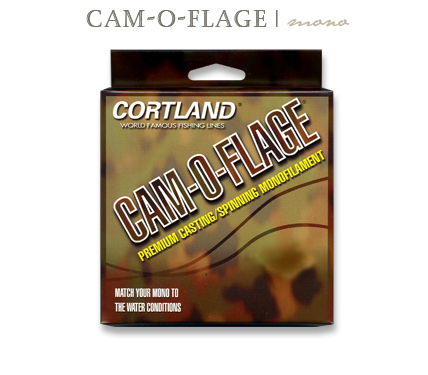
Under the Gun
Majority of my fishing takes place throughout the Upper Midwest Great Lakes Region where largemouth and smallmouth bass are in abundance. My favorite way to catch bass is by using 6 to 10lb. monofilaments on spinning gear. In order to be successful on the water, using a fishing line that can be applied to several techniques and employed in all conditions is mandatory.
I have fished for bass with just about every brand of monofilament line imaginable. In order to properly administer my testing and to determine whether Cortland Camo proved to be a winner, my testing was based on factors such as casting & retrieving, strength & durability, and performance.
Casting & Retrieving
Most folks agree with me that fishing is fun, but when you lose a huge smallmouth bass due to break-offs or poor performing line, that lone incident can lead to a lot of disappointment and may mentally affect you for an entire season.
In order to catch bass that run an average size of 3 to 5 lbs, without question a quality line needs to be used.
Throughout my review period, the Cortland Camo I used was predominantly fished with bottom bouncing plastics such as tube jigs and creature baits; Presentations that require sensitivity to detect the bottom and bites, and strength to bring big fish into the boat.
Cortland Camo casts easily and has a nice feel to it. Off the spool, it is extremely smooth and quickly glides through the rod guides without little friction and resistance. What allows for superb casting are its low spool memory and limpness. The only factor that severely hinders casting and handling performance is the line’s intolerance to sunlight and UV rays. But tell me this: Which monofilament fishing line isn’t resistant to the sun?
Strength & Durability
A line’s breaking strength is an indication of the amount of force it takes to break the line with a steady, straight pull. In my opinion, this is the most important factor in determining whether or not a particular fishing line is good or not.
The Cortland Camo I exclusively fished with for big smallmouth bass was 8lb. This line demonstrated its abilities in stretch and breaking limits by fighting off snags. In addition, it passed its abrasion resistance tests with high marks as frays and other weakening points were seldom experienced when fishing rock-infested waters.
Bass anglers typically love to fish around structure and heavy cover because of one reason: That’s where the big fish like to feed and live. When fishing near structure such as downed trees, rock piles, and weed beds, fishing line takes a first-class beating. This is exactly what I attempted to put Cortland Camo through. I often ran my baits through dense structure to test the line as well as to catch fish.
Abrasion resistance is the measure of how easily a line is scuffed, nicked or scratched by any hard objects it rubs against. Thin lines are less abrasion resistant than fat lines because any microscopic knick will take a proportionally bigger “bite” that reduces the amount of remaining nylon in a thin line much more than in a thick line. Cortland Camo is specially formulated for extra abrasion resistance, which is a big help when fishing around rocks and snags.
This line is tough, but isn’t a steel cable or an otherworldly object. Fishing line does experience damage when continuously fished through rough terrain. Fishing lines like Cortland Camo are developed to be abrasion resistance. Looking back at my real world tests, the line fared better than expected. Only after long periods of running the line through structure did the line appear damaged, but only with minor frays. Cortland Camo is a lot tougher and durable than many other fishing lines I have dedicatedly used before.
Applications
Throughout the history of fishing, lines have evolved from a simple single strand to the modern technologically-advanced braided, hybrid, and copolymer lines where each has its own benefits. Cortland, a pioneer in fishing line manufacturing and development, is making its mark in the line market by offering bass anglers a strong, dependable, and multi-purpose monofilament such as Camo.
Although Cortland Camo might be difficult to find at most major tackle retailers, the line is definitely out there, and available online through Cortland’s website and its dealers. Cortland Camo is a line without limits, and a line that doesn’t lie to anglers about its performance and value. It is superb in casting, superior in abrasion resistance, remarkably invisible to fish, and is very smooth.
The years of line research conducted by Cortland suggests that Camo is among the top in quality, and brings out the trust and confidence among its fishermen. High regards like these ultimately gives Camo the potential of becoming a big hit amongst bass anglers.
Whether you are on the water to fish with power, or finesse for bites, I highly recommend this monofilament line for all of your big bass fishing needs. No matter the application, or where you fish, Cortland Camo won’t let you down.
MSRP: $4.99 – $8.99
Available in spools of 4/ 6/ 8/ 10/ 12/ 14/ 17/ 25/ 30
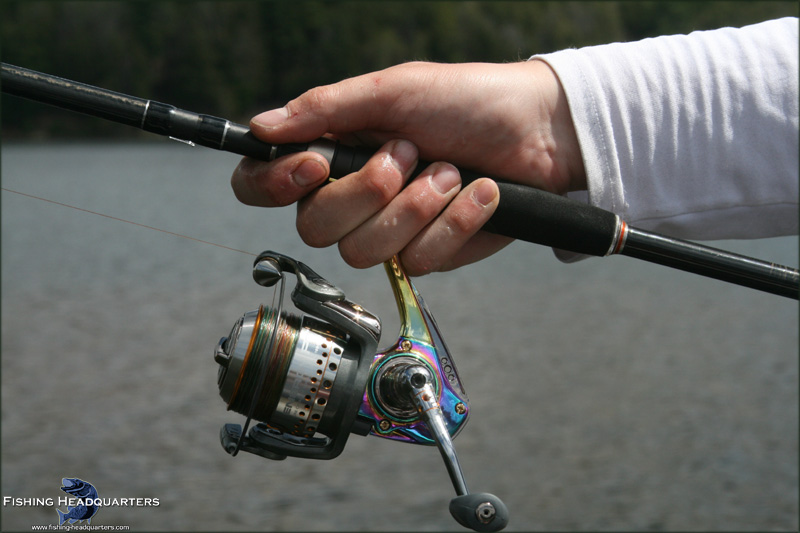
8 lb Cortland Camo is spooled onto one of my main big smallmouth bass set-ups: Quantum Energy 30PTi reel with a 7ft 4in medium heavy Quantum Superlite rod.
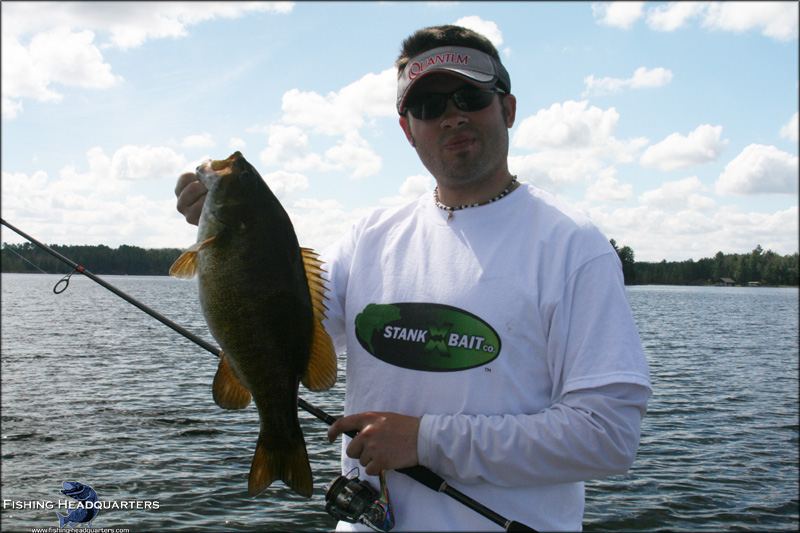
Just one of several big smallmouth bass taken with Cortland Camo in 2011.
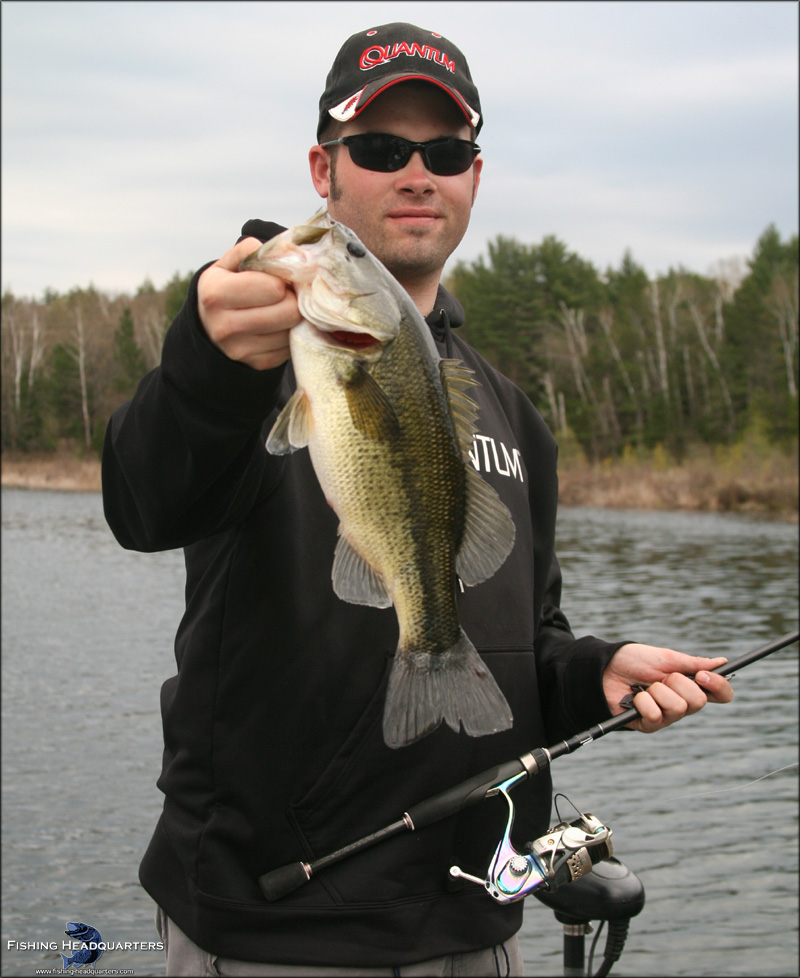
Besides proving to be an excellent line for clear water smallmouth bass fishing, Cortland Camo is just as good, if not better, at extracting largemouth bass from the weedy shallows.
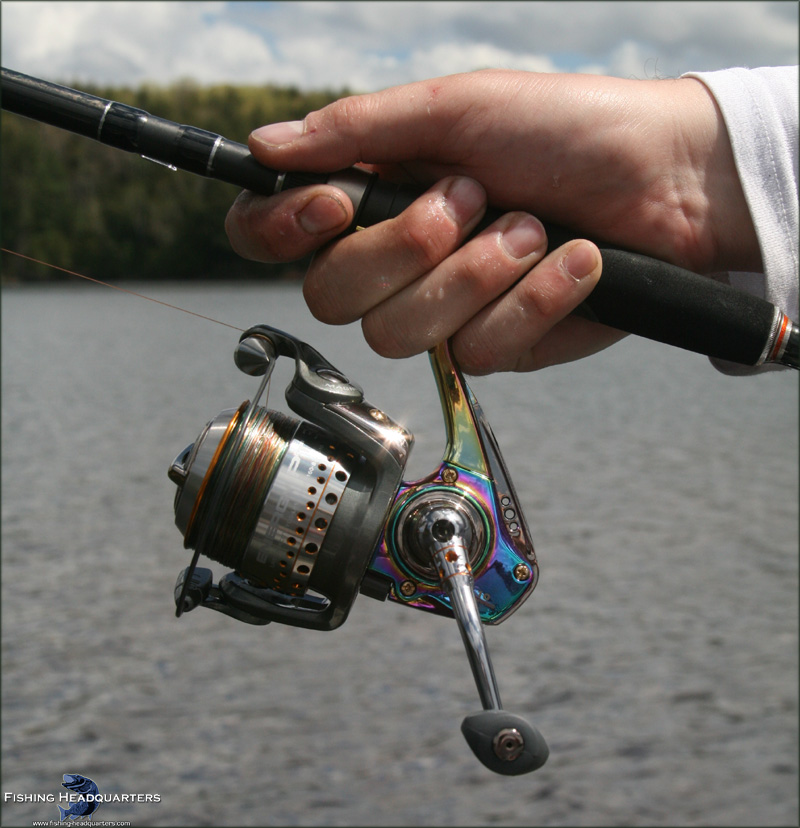
Get some!



